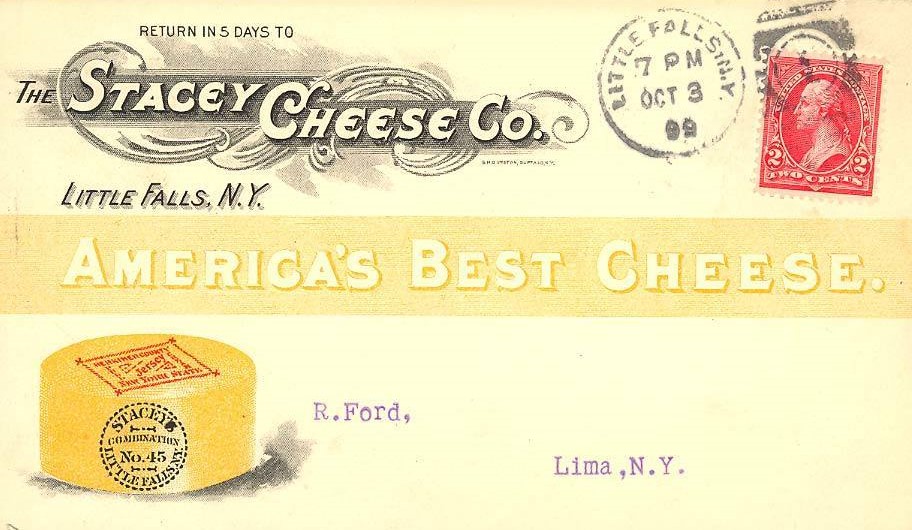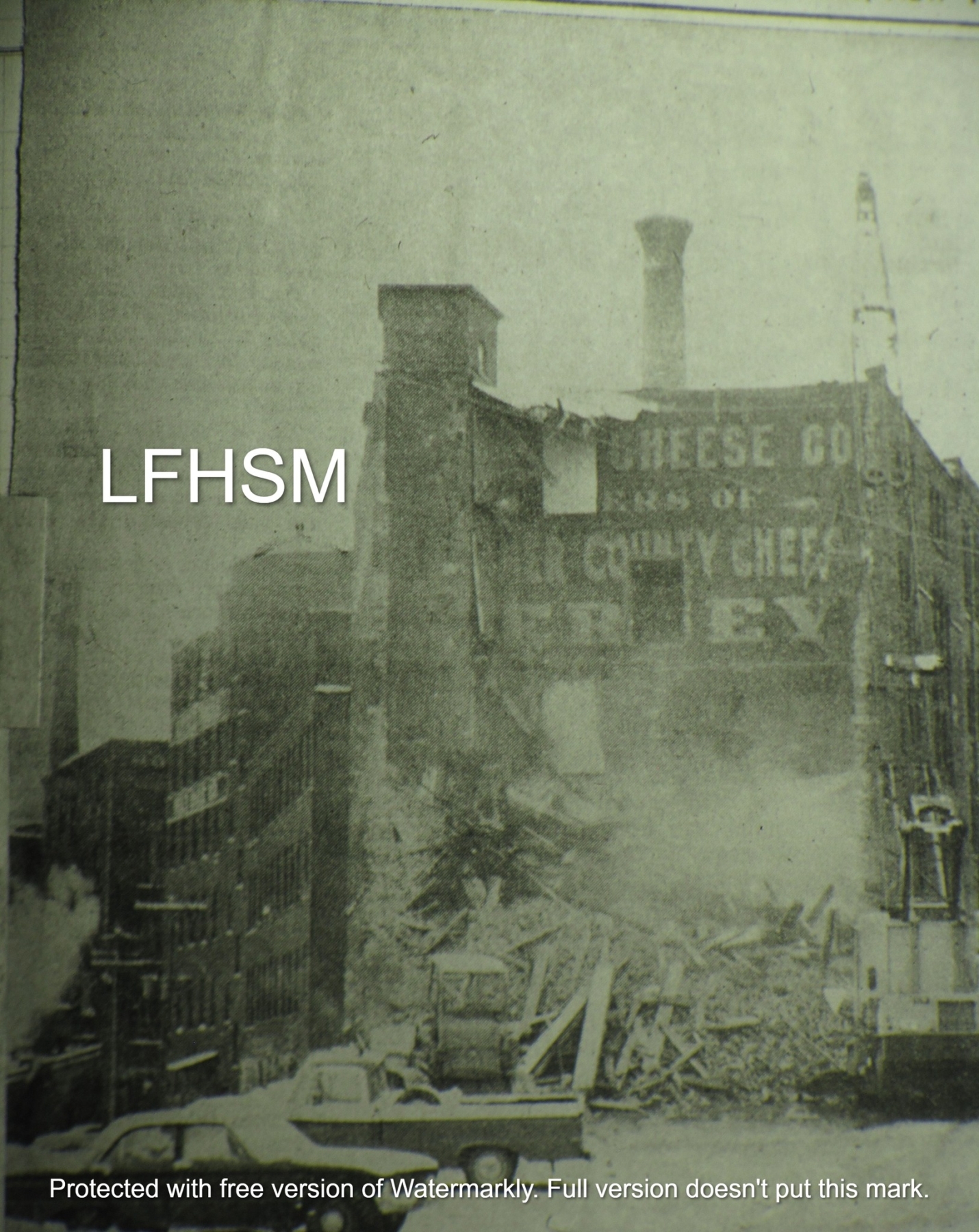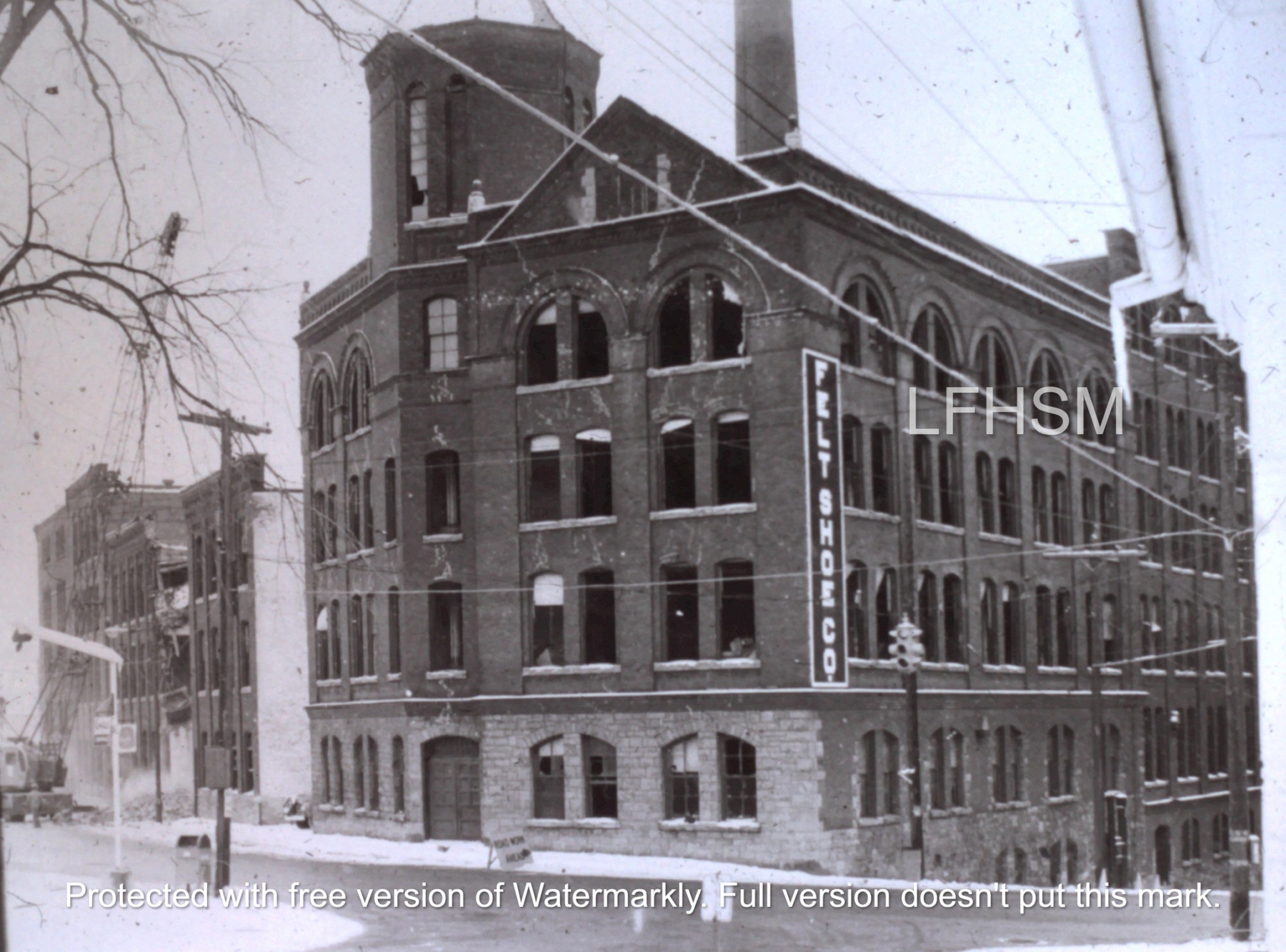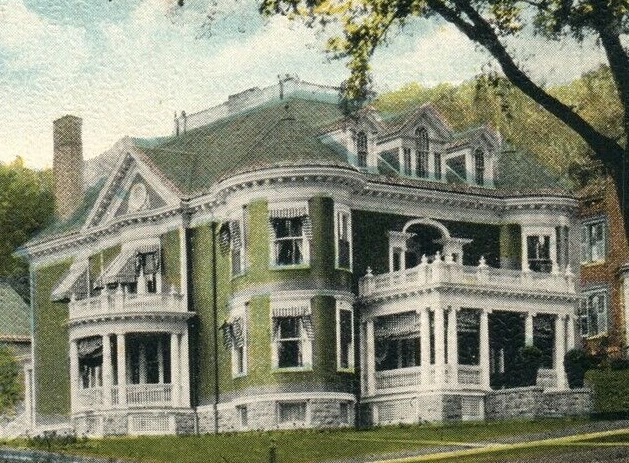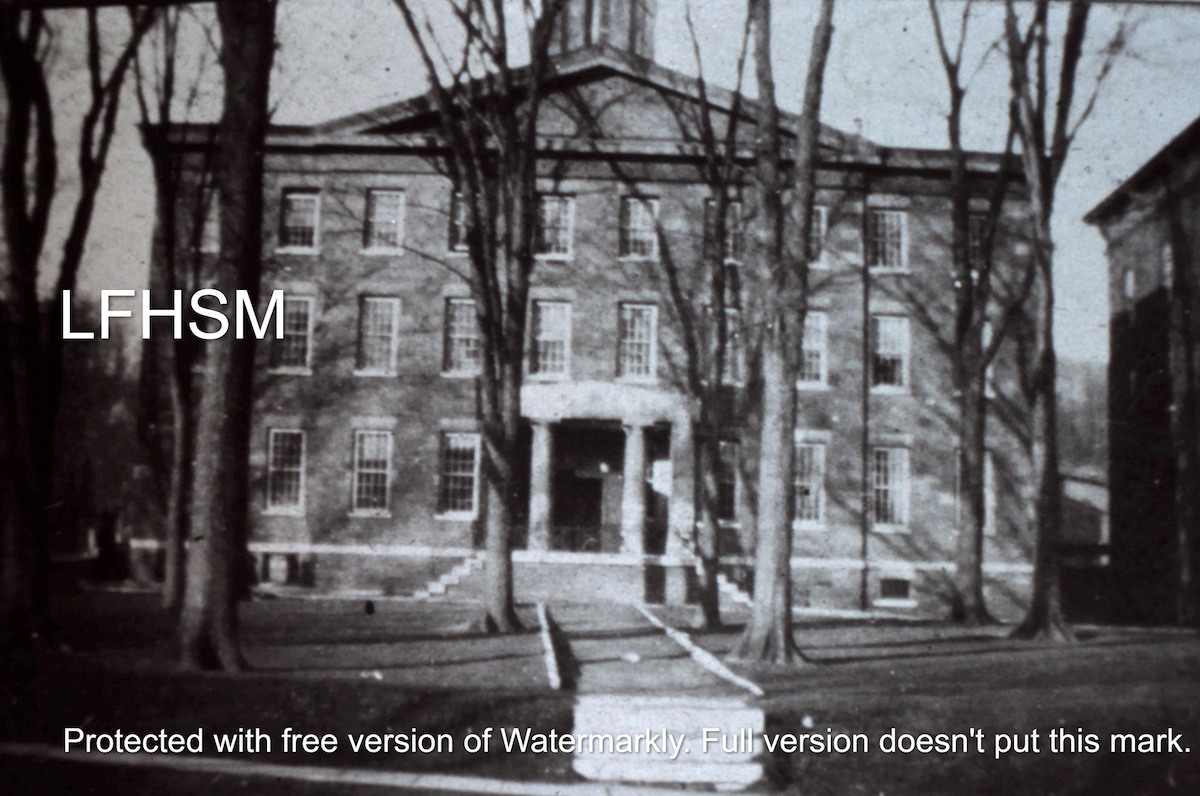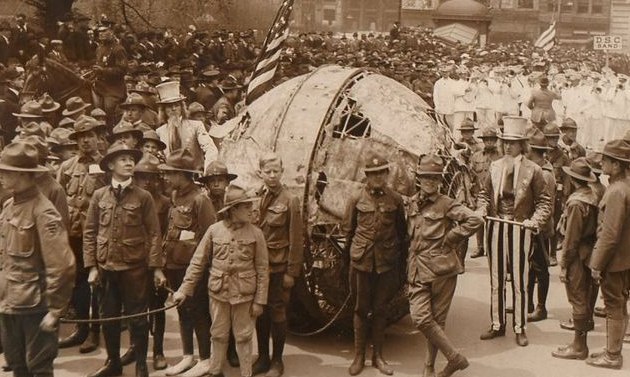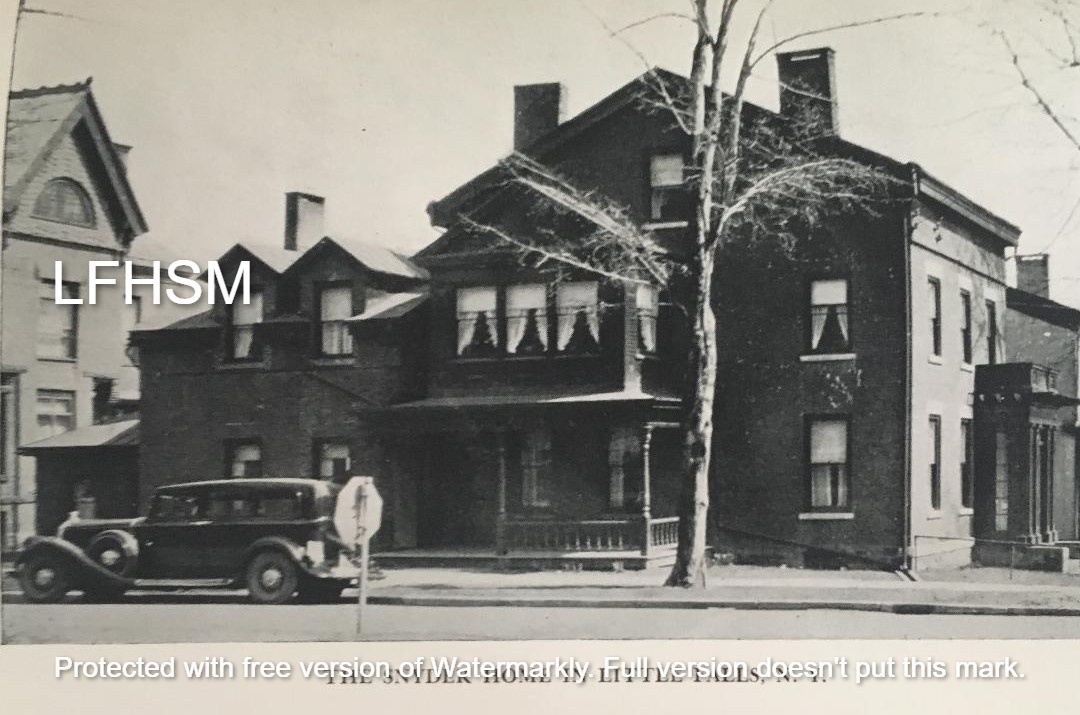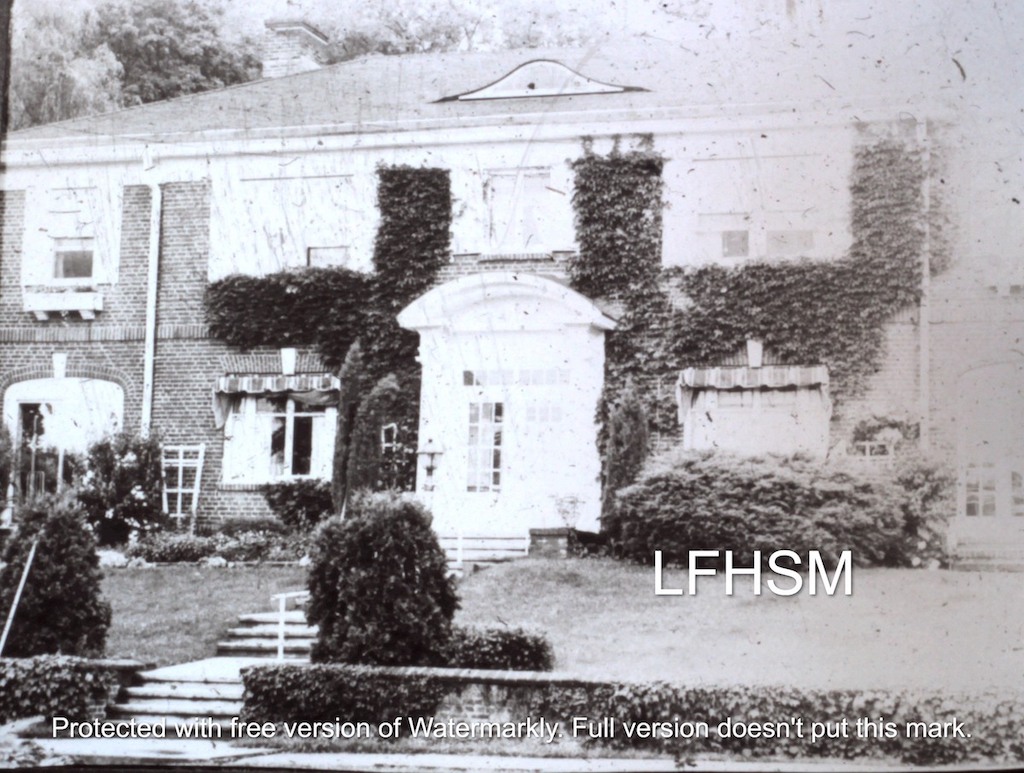Architect Dwight J. Baum, of Riverdale, N.Y., will draw the plans for Frank Simpson’s new home at 39 Salisbury Street.
“Mr. Baum is a former Little Falls boy, and his talent as a draughtsman, early apparent, stands him in good stead in his profession. He eventually designed several other distinguished homes in Little Falls.”
February 24, 1916, Cooney Archives
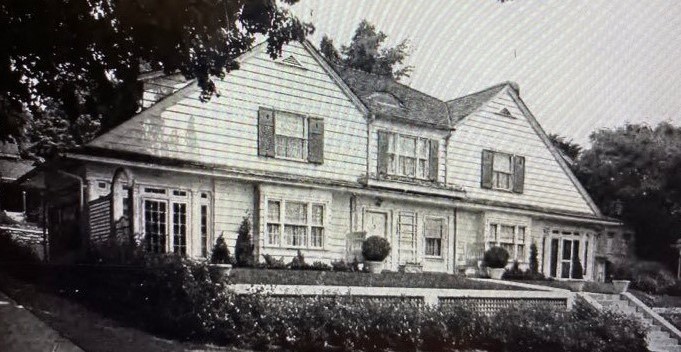
Designed by Dwight J. Baum | c. 1916 Frank Mitchell Simpson House | 39 Salisbury Street, Little Falls, NY
BIOGRAPHY OF DWIGHT JAMES BAUM
Dwight J. Baum (June 24, 1886 – December 14, 1939) was an American architect most active in New York and in Sarasota, Florida. His work includes Cà d’Zan, the Sarasota Times Building (1925), Sarasota County Courthouse (1926), early residences in Temple Terrace, Florida, Sarasota County Courthouse (1927), Pinecroft, West Side YMCA on 63rd Street between Central Park and Columbus Avenue, Columbus Circle (Syracuse, NY) (1934) and Hendricks Memorial Chapel.
Baum was born in Newville, New York (just outside of Little Falls) and moved to Syracuse as a young man, eventually graduating from Syracuse University in 1909, with an architecture degree. He worked for nationally known firms Boring and Tilton and Stanford White before venturing out with his own residential design firm around 1912.
A 1922 visit to Florida led to an important commission from John Nicholas Ringling, the 30-room mansion and estate that the Ringling’s dubbed Cà d’Zan, which is now on the grounds of the John and Mable Ringling Museum of Art. During the 1920s Florida land boom, Baum designed a half-dozen significant civic buildings and several houses in Sarasota, and at least one residence in Tampa, all in the Mediterranean Revival Style.
In 1926 Baum designed forty two Mediterranean Revival style houses of varying sizes in the City of Temple Terrace, Florida, this is thought to be the largest collection of his work in the Southeast. He also designed Sunset Hill for Mrs. Eugene D. Stocker at Warren, New York in 1923-1924. It was listed on the National Register of Historic Places in 2007. During the Depression, Baum became involved with historic preservation issues, becoming involved with Good Housekeeping Magazine as consulting architect, and as designer of their building exhibit at the 1933 Chicago World’s Fair.
His later work includes buildings at his alma mater, Syracuse University (notably the focal point of the campus plan, the Hendricks Chapel, designed with John Russell Pope), and the pedestal for V. Renzo Baldi’s statue of Columbus in the city’s Columbus Circle.
Baum was related to the Louis W. Baum, JR and family here at Little Falls. He was also distantly related to author and designer L. Frank Baum.
BAUM’S WORK
A number of his works are listed on the National Register of Historic Places. His work was also part of the architecture event in the art competition at the 1936 Summer Olympics. Baum’s work includes the following:
● Sarasota Times Building, 1925, NRHP-listed
● El Vernona Apartments-Broadway Apartments, 1926
● Early residences in Temple Terrace, Florida, circa 1926
● Cà d’Zan, now the John and Mable Ringling Museum of Art, Sarasota, 1927
● Sarasota County Courthouse, 1927, NRHP-listed
● Residence of Arch B. Johnston, son of Archibald Johnston (first mayor of consolidated city of Bethlehem), Bethlehem Township, Pennsylvania, 1927
● Memorial Hospital, Syracuse, with John Russell Pope, 1927
● Pinecroft, the Crosley Powel, Jr. Estate, Cincinnati, Ohio, 1928–1937
● West Side YMCA, on 63rd Street between Central Park and Columbus Avenue, New York City, 1930 (Baum’s only high-rise)
● Columbus Circle (Syracuse, NY), 1934
● Hendricks Chapel, Syracuse University, with John Russell Pope, 1929–1930
● El Vernona Hotel-John Ringling Hotel, Sarasota, 1929 (razed)
● United States Post Office, Flushing, New York, with William Knowles, 1934
(Below Not Listed In Chronological Order)
● Burns Realty Company-Karl Bickel House, 101 N. Tamiami Trail Sarasota, FL, NRHP-listed[2]
● El Vernona Apartments-Broadway Apartments, 1133 4th St. Sarasota, FL, NRHP-listed
● El Vernona Hotel-John Ringling Hotel, 111 N. Tamiami Trail Sarasota, FL, NRHP-listed
● Dr. Walter Kennedy House, 1876 Oak St. Sarasota, FL, NRHP-listed
● Pinecroft, 2336 Kipling Ave. Cincinnati, OH, NRHP-listed
● Riverdale Presbyterian Church Complex, 4761-4765 Henry Hudson Parkway New York, NY, NRHP-listed
● George Schueler House, 76 S. Washington Dr. Sarasota, FL, NRHP-listed
● Sunset Hill, 102 NY 167 Warren, NY, NRHP-listed
● US Post Office-Flushing Main, 41-65 Main St. New York, NY, NRHP-listed
● Sarasota County Courthouse, 1926
SOURCE: Copied & Pasted from: https://en.wikipedia.org/wiki/Dwight_James_Baum
Some of the architectural work of Dwight James Baum can be seen in the 1920s book “House and Garden’s Book of Houses” by Richardson Wright, which can be viewed at: https://ia600201.us.archive.org/…/housegardensbook00wri…
According to the Cooney Archives: THIS DAY IN HISTORY… “On December 13, 1939, born in Little Falls in 1886, and brought up here, internationally renowned architect Dwight James Baum has died. He designed many homes, hospitals, college buildings, and pavilions for the 1939 World’s Fair, but his most famous work was the Ca d’Zan in Sarasota, Florida for John Ringling of circus fame.”
IRVING E. STACEY
Stacey’s father, Jacob, a truck driver, was an 1845 immigrant from Switzerland and his mother, Araustena Hahn, immigrated from Germany in 1841. They were married in Dutchtown, NY – being present-day Minden. The family left for Little Falls when Irving was around 16 years of age and purchased a house at 63 Salisbury Street.
Stacey married Anna C. Loucks on 11 November 1885 and they had two daughters, Edith May in 1887 and Edna Irene in 1889.
Irving’s brother Frank, purchased most of the land on the west side of Waverly Place from Mary Petrie in 1899, and built his family home next to the Little Falls Library in 1900, being 12 Waverly Place. Irving bought a land lot from his brother Frank in 1902, and built his family home, being 28 Waverly Place.
According to the Cooney Archives: “THIS DAY IN HISTORY…“On May 23, 1902, the handsome new home of Irving E. Stacey at 28 Waverly Place is about completed and Mr. and Mrs. Stacey have begun moving into it. It is a fine ornament to that locality. Stacey had an Opus 559 pipe organ built for his home by the Skinner Organ Company in 1925. Currently, it is the home of Mr. and Mrs. Martin Babinec.”
Irving Stacey was partners with his brother Frank, in the Stacey Cheese Company. He was also partnered with his brother Frank in the Little Falls Felt Shoe Company, with Irving owning 3/5’s of the company, and Frank owning 2/5’s.
According to the Cooney Archives: THIS DAY IN HISTORY… “On May 1, 1916, the Stacey Cheese Company ceased operations when the executives foresaw the decline of Herkimer County as the center of the cheese trade, and the building space was taken over by the Little Falls Felt Shoe Company which had been founded in 1905. Irving E. Stacey is president of both companies.”
Edith May married Frank M. Simpson on 18 June 1912. Edna went to Great Britain in 1918, during WWI with the Red Cross. Irving E. Stacey’s death was on 30 November 1938 and is buried in the Church Street Cemetery.
HARDING’S VIEW OF IRVING E. STACEY
Little Falls author, George Anson Harding, states in his 1893 book “History of Herkimer County, New York” on page 94, that: ‘Stacey, Irving E., Little Falls, cheese broker, is a native of Little Falls and began business as a clerk in 1880 (at the age of sixteen) in the office of Landt & Mesick. After two years he was given a percentage in the business and at the end of four years became a partner.
In 1889 the firm discontinued, and Mr. Stacey embarked in business for himself and has been unusually successful. He has become known as the largest home trade buyer in New York State outside of New York City. He buys for the wholesale trade and ships to all points and into nearly every State in the Union. He is a young man about twenty-eight years of age and possessed of unusual business enterprise and energy.”
SOURCE: https://www.ebooksread.com/…/history-of-herkimer-county…
COONEY’S VIEW OF IRVING E. STACEY
The written words of Edward Cooney, “THE EDWARD COONEY” of the Cooney Archives, from his 1961 book “History of the City of Little Falls, NY” in “Part Two” gives us a peek into the past of what it was like here in Little Falls during the early 1900s and they are as follows:
“Irving Stacey was born in Minden, NY on April 22, 1864. Back in 1889, when this village was the center of the cheese market, he organized the Stacey Cheese Brokerage Co. in a building which is part of the present Little Falls Felt Shoe Co. group. As the demand for milk by New York City and the condensed milk factories took away the supply for local area cheese factories, he decided to engage in the felt shoe business.
LITTLE FALLS FELT SHOE COMPANY
In 1905 the Little Falls Felt Shoe Co. was organized and the building of Sheard’s Eagle Mills, at the southwest corner of West Main and John Streets, was purchased.
The first superintendent was Mr. Freigang, but he soon left and Frank Engel, who was with the Dolges in Dolgeville, was engaged. Business prospered and additions were built in 1917, 1920, and finally in 1938 the last addition joined the Felt Shoe group with the cheese market building on John Street. In 1919 a branch was established in St. Johnsville.
On November 30, 1938, Irving Stacey passed away and Frank Engel became president and Charles Brown superintendent. On Mr. Engel’s death, which occurred July 12, 1943, Frank M. Simpson became president. He passed away on February 23, 1957, and Irving Stacey Simpson, grandson of the founder, became president. The other officers are: Samuel M. Simpson, (also a grandson)vice president; Richard Rasch, secretary and treasurer; John Kopek, assistant treasurer; and Marcus Wood, superintendent. Its only products are slippers.”
SOURCE: http://www.threerivershms.com/lf2.htm
FRANK MITCHELL SIMPSON
Frank Mitchell Simpson was the son of George M. an insurance agent, and Emily Simpson and was born at Little Falls on 25th of March in 1886. Simpson grew up on Center Street and graduated in 1904, as the Valedictorian from Little Falls High School, presently known as Benton Hall Academy. He attended Syracuse University and after completing his education, he took a sales representative position with the Estate Stove Company, in the state of Ohio. Within months, he had returned to Little Falls to take the position of secretary and treasurer in the Little Falls Felt Shoe Company, becoming president of the company in 1942.
Simpson married Edith May Stacey, daughter of Irving Stacey, on 18th of June in 1912. Throughout their marriage they had seven children, namely: Irving Stacey in 1913; Frank Mitchell JR in 1915; Samuel in 1917; Ellen in 1919; Anne in 1920; Norman in 1921; and Robert in 1923.
During WWI, Simpson was the chairperson for the Little Falls chapter of the Liberty Loan campaign. The Liberty Loan Campaign was the authorization from Congress to sell U.S. War Bonds, or Liberty Bonds, to help finance World War I. The bonds were a way for Americans to support the war, especially if they were unable to take part in combat. The bonds were issued five times between 1917 and 1919.
According to the Cooney Archives: THIS DAY IN HISTORY …”ON APRIL 20, 1918, as a part of the Liberty Loan campaign, a seven foot diameter ball is being rolled from Buffalo to New York City. The jouncing sphere was pushed through Little Falls by Boy Scouts ahead of a five division parade with twenty five hundred people in line including fifteen hundred union members. After a speech by Mayor Zoller, the scouts rolled the ball to East Creek.”
The sphere was rolled by Boy Scout Troops across the state, from Buffalo, NY to New York City, in an effort to raise awareness for the purchase of Liberty Bonds. By the time the ball reached NYC, it showed definite signs of wear and tear.
According to the Cooney Archives: THIS DAY IN HISTORY …On October 19, 1918, Little Falls’ allotment for the Fourth Liberty loan was $1,270,500 which was quickly attained in less than one month under the chairmanship of Frank Simpson. In addition, $27,000 was raised by selling war saving stamps.
Simpson was a former board member of many organizations, including Benton Hall Academy, Herkimer County Trust Bank, Syracuse University, Old Forge Golf Club, and the National Shoe Manufacturers Association. He was also a member of the Elks, Ziyara Temple of the Shrine at Utica, and was a 32nd degree Mason.
Frank Mitchell Simpson’s death on 23rd of February in 1957 was due to heart disease.
In the late 1950s, Irving Stacy Simpson, Irving’s grandson, would frequently stop in at the Rialto Theatre to play the Wurlitzer organ on his way to work, as the president of the Stacey family owned company, the Little Falls Felt Shoe Company.
SOURCES:
Ancestry.com
Historic Newspapers
*From The Cooney Archive’s: This Day In History by Louis Baum, Jr. Digitizing of historical photos by Gail & Mike Potter. Article written by Darlene Smith.
The “Historic Homes & Places Self-Guided Walking Tour in Little Falls, New York” can be found at : https://littlefallshistoricalsociety.org/historic-homes…/
Learn more about Historic Little Falls, NY by visiting https://littlefallshistoricalsociety.org where you can find an online writing series, historical timelines, events, exhibits, and so much more.

